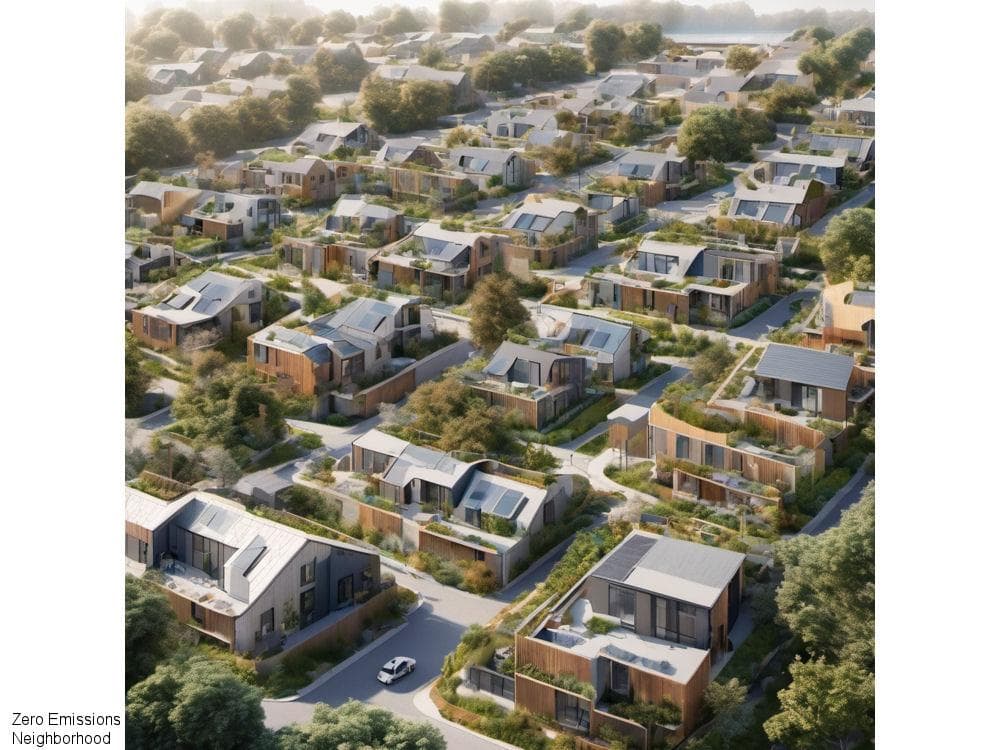The US Department of Energy (US DOE) has published Decarbonizing the U.S. Economy by 2050: A National Blueprint for the Buildings Sector, which contains a link to the full study. The document is long on words, thin on scoping and virtually devoid of plan. The “blueprint” identifies “cross-cutting goals” of equity, affordability and resilience.
The document lists the following strategic objectives:
- Increase building energy efficiency - Reduce onsite energy use intensity in buildings 35% by 2035 and 50% by 2050 vs. 2005.
- Accelerate onsite emissions reductions - Reduce onsite greenhouse gas emissions in buildings 25% by 2035 and 75% by 2050 vs. 2005.
- Transform the grid edge - Reduce electrical infrastructure costs by tripling demand flexibility potential by 2050 vs 2020.
- Minimize embedded life cycle emissions - Reduce embodied emissions from building materials and construction 90% by 2050 vs 2005.
“Federal actions to accelerate building decarbonization include: early-stage research and development that raises the ceiling on maximum technology performance and improves affordability; deployment and market stimulation activities that remove barriers to technology adoption and spur further market penetration of commercialized and emerging technologies; and efficiency standards and building codes that raise the floor of minimum performance and lock in proven cost-effective low-carbon technologies for mainstream adoption. Strategic coordination across these different types of actions increases their potential to accelerate deployment of high performance, low-carbon building solutions over time. “
The challenge of increasing building energy efficiency in the residential sector was addressed in detail 20 years ago by Building Green. They estimated the cost of a “major energy retrofit” at $50,000 per residential dwelling, though inflation in the building trades would have increased that cost to mere than $100,000 in 2024. The cost of retrofitting approximately 125,000,000 dwelling units would be approximately $12,500,000,000,000. The cost of retrofitting commercial buildings would add approximately $4,000,000,000,000. The payback period for these investments would be several decades.
Accelerating emissions reductions would be achieved by replacing primarily natural gas and propane end use equipment with electric end use equipment, including heat pumps for space heating and cooling, water heating and laundry drying and electric ranges and ovens. Normal equipment life cycle replacement could be assured by banning the sale of new fossil fuel appliances and equipment after some date certain. Replacement could be accelerated by employing a variety of incentives, subsidies and tax breaks, as is currently being done for electric vehicles and intermittent wind and solar generation.
The transformation of the grid edge would be accomplished through the application of remotely controllable smart meters and “The Internet of Things” to implement Demand Side Management of customer energy consumption to offset demand peak on the grid. This could potentially include drawing power from customer Powerwall and EV batteries.
Minimizing embedded cycle emissions “reduces the embodied emissions associated with new construction and major renovations, including material manufacturing, transport, construction, and disposal”.
Some types of buildings are expected to pose unique challenges. A recent project to replace a fossil fuel heating system with heat pumps in a New York City Housing Authority complex cost $176,000 per unit in the 159 unit complex. The cost of a comprehensive major energy retrofit on the complex would have been substantially greater. The New York City Housing Authority manages more than 175,000 apartments in more than 1,000 buildings. Ongoing R&D on window-mounted heat pumps might help reduce the cost of future high rise apartment conversions.
